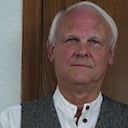Which instrument was used as the basis for creating the piano?
A fortepiano is an early piano. In principle, the word "fortepiano" can designate any piano dating from the invention of the instrument by Bartolomeo Cristofori around 1700 up to the early 19th century.
The piano was invented by harpsichord maker Bartolomeo Cristofori in Florence around the turn of the 18th century. The first reliable record of a piano appears in the inventory of the Medici family (who were Cristofori's patrons), dated 1700. Cristofori continued to develop the instrument until the 1720s, the time from which the surviving three Cristofori instruments date.
Cristofori is perhaps best admired today for his ingenious piano action, which in some ways was more subtle and effective than that of many later instruments. However, other innovations were also needed to make the piano possible. Merely attaching the Cristofori action to a harpsichord would have produced a very weak tone. Cristofori's instruments instead used thicker, tenser strings, mounted on a frame considerably more robust than that of contemporary harpsichords. As with virtually all later pianos, in Cristofori's instrument, the hammers struck more than one string at a time; Cristofori used pairs of strings throughout the range.
The earlier fortepiano became obsolete and was absent from the musical scene for many decades. In the 20th century, the fortepiano was revived, following the rise of interest in historically informed performance.
More Info:
en.wikipedia.org







